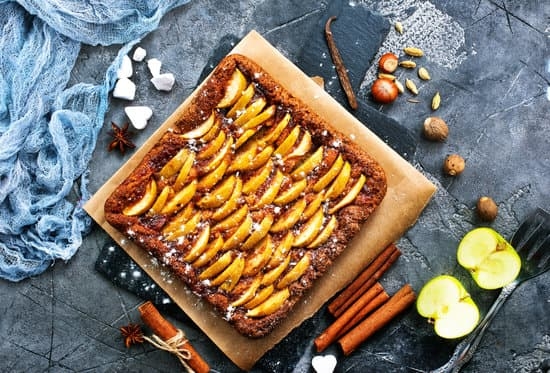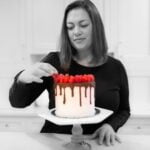What is fondant cake decorating? Fondant is a versatile sugar paste that has become a popular choice for decorating cakes due to its smooth and sleek finish. In this article, we will explore the world of fondant cake decorating, from its origins to the different types available in the market.
Fondant is a pliable icing that can be rolled out into thin sheets to cover cakes or molded into various shapes and designs. Its primary purpose in cake decorating is to provide a polished look and allow for intricate decorations that are hard to achieve with traditional buttercream icing.
Dating back to ancient civilizations, fondant has evolved over the years to become an integral part of cake decoration. Initially used in Europe as a sweet confectionery, fondant eventually found its way into the world of cake decorating, thanks to its flexibility and versatility. Today, it is a go-to choice for professional pastry chefs and home bakers alike.
History of Fondant
Fondant, a versatile icing used for cake decoration, has a rich history that dates back centuries. The origins of fondant can be traced back to France in the 16th century, where it was initially used as a sweet treat for the elite class. Over time, fondant evolved from being a standalone confectionery to becoming an essential component in cake decorating. Its smooth texture and ability to create intricate designs made it popular among bakers and pastry chefs worldwide.
As fondant gained popularity in the baking world, different variations of this icing emerged to cater to varying preferences and requirements. Rolled fondant, also known as pettinice, is one of the most commonly used types of fondant for decorating cakes. It is easy to work with and provides a smooth finish on cakes.
On the other hand, poured fondant is often used for coating pastries like petits fours. There are also flavored fondants available in the market that add an extra layer of taste to cake decorations.
Interestingly, the evolution of fondant has been closely intertwined with advancements in cake decorating techniques and tools. The introduction of silicone molds, shaping tools, and edible dyes has allowed bakers and decorators to push the boundaries of what is possible with fondant cake decoration. Today, what is fondant cake decorating without these essential tools that make it easier to create intricate designs and unique decorations on cakes?
Types of Fondant
Fondant is a versatile and popular material used in cake decorating, known for its smooth finish and ability to create intricate designs. There are several types of fondant available on the market, each with its own unique properties. The two main categories of fondant are rolled fondant and poured fondant. Rolled fondant is commonly used for covering cakes and creating decorations, while poured fondant is often used for glazing or filling pastries.
One popular type of rolled fondant is marshmallow fondant, which is made from a mixture of melted marshmallows, powdered sugar, and water. This type of fondant has a sweet flavor and soft texture, making it easy to work with for beginners. Another common variety is commercial fondant, which can be store-bought in various colors and flavors. Commercial fondant is convenient for those who prefer not to make their own fondant from scratch.
For those looking for a more natural alternative, there are also homemade fondant recipes that use ingredients like gelatin, glucose syrup, and glycerin. This allows decorators to have more control over the flavors and textures of their fondant. Ultimately, the type of fondant chosen will depend on personal preference, the desired outcome, and the specific requirements of the cake being decorated.
| Type | Description |
|---|---|
| Marshmallow Fondant | Made from melted marshmallows, powdered sugar, and water; sweet flavor and soft texture |
| Commercial Fondant | Store-bought in various colors and flavors; convenient option for decorators |
| Homemade Fondand | Made from gelatin, glucose syrup, glycerin; offers more control over flavors and textures |
Tools and Materials Needed for Fondant Cake Decorating
When it comes to fondant cake decorating, having the right tools and materials is essential for achieving beautiful and professional-looking results. Whether you are a beginner or an experienced baker, having the necessary supplies can make the decorating process much smoother and more enjoyable. Here are some of the essential tools and materials needed for working with fondant:
Rolled Fondant
The most important ingredient for fondant cake decorating is, of course, the fondant itself. Rolled fondant is a pliable sugar paste that can be rolled out and draped over cakes to create a smooth finish. It is available in various colors and flavors, making it versatile for different cake decorating projects.
Rolling Pin
A good quality rolling pin is essential for rolling out the fondant to the desired thickness without sticking or tearing. A non-stick rolling pin or one specifically designed for working with fondant is recommended for best results.
Smoothers and Cutters
Smoothers are handy tools for creating clean and sharp edges on your fondant-covered cakes. They also help in smoothing out any imperfections and air bubbles in the fondant surface. Cutters come in various shapes and sizes for cutting out specific designs or shapes from the fondant.
Edible Glue and Brush
Edible glue is used to attach decorations, layers of fondant, or other edible elements securely onto the cake. A food-safe brush is needed to apply the glue precisely where needed without making a mess.
Having these essential tools and materials on hand will set you up for success in your fondant cake decorating endeavors. With practice and patience, you can create stunning cakes that will impress your friends, family, or clients with your newfound skills in what is fondant cake decorating.
Step-by-Step Guide to Fondant Cake Decorating
Fondant cake decorating is a popular technique used by many bakers and pastry chefs to create beautifully designed cakes for various occasions. If you’re new to the world of fondant cake decorating, fret not. Here is a step-by-step guide to help you master the art of using fondant to decorate your cakes:
1. Prepare Your Cake: Before you start working with fondant, ensure that your cake is baked and cooled completely. It’s essential to have a smooth surface to work on, so if needed, trim any uneven edges or apply a thin layer of frosting as a base.
2. Knead the Fondant: Take out the fondant from its packaging and knead it until it becomes soft and pliable. This process helps to warm up the fondant and makes it easier to roll out and work with. If the fondant feels too dry, you can add a small amount of vegetable shortening to make it more flexible.
3. Roll Out the Fondant: Dust your work surface with cornstarch or powdered sugar to prevent the fondant from sticking. Use a rolling pin to roll out the fondant into a smooth, even sheet that is slightly larger than the size of your cake. Gently lift the rolled-out fondant using your rolling pin and drape it over your cake.
4. Smooth Out the Fondant: Carefully smooth out the fondant over the surface of your cake, starting from the top and working your way down the sides. Use a fondant smoother or your hands to eliminate any air bubbles and creases. Trim off any excess fondant at the base of the cake using a sharp knife.
5. Add Decorations: Once you’ve covered your cake with fondant, you can now let your creativity shine by adding decorations like cut-out shapes, flowers, ruffles, or intricate patterns. Use tools like molds, cutters, or edible paints to create stunning designs on your cake.
By following these steps and practicing regularly, you’ll soon become proficient in what is fondant cake decorating and be able to wow your friends and family with beautifully decorated cakes for any occasion.
Fondant Decorations
Fondant cake decorating allows for endless creativity when it comes to customizing cakes for any occasion. Using fondant to create decorations opens up a world of possibilities for adding intricate details and designs that can truly elevate the overall look of a cake. From elegant floral patterns to whimsical characters, fondant decorations offer a wide range of options to suit any theme or style.
When it comes to creating fondant decorations, there are several techniques and designs that you can explore. Here are some popular options to consider:
- Basic Fondant Shapes: Start by mastering basic shapes such as circles, squares, triangles, and hearts. These simple shapes can be combined and layered to create more complex designs.
- Embossing: Use embossing tools or textured mats to add decorative patterns or textures to your fondant before cutting out shapes or forming them into figurines.
- Painting: Edible food coloring or edible dusts can be used to paint intricate details on fondant decorations, adding depth and dimension to your designs.
Exploring different techniques and designs for creating fondant decorations can help you expand your skills and create stunning cakes that impress your friends, family, or clients. Whether you’re looking to create a simple yet elegant cake for a wedding or a fun and festive design for a birthday celebration, fondant decorations offer endless possibilities for bringing your creative vision to life.
Common Fondant Cake Decorating Mistakes
Fondant cake decorating is a popular technique amongst bakers and cake decorators for creating beautifully designed cakes for various occasions. However, like any other skill, working with fondant can be tricky, and there are common mistakes that beginners often encounter. By being aware of these mistakes and learning how to avoid them, you can elevate your fondant cake decorating skills to the next level.
Rolling Out Fondant
One of the most common mistakes when working with fondant is not rolling it out to the proper thickness. If the fondant is rolled too thin, it may tear easily or not provide enough coverage over the cake. On the other hand, if it is rolled too thick, it can become heavy and overwhelm the taste of the cake. To achieve the right thickness, use spacers or guides on your rolling pin to ensure evenness throughout.
Cracking and Drying Out
Another mistake that often occurs is fondant cracking or drying out while working with it. This can happen when fondant is exposed to air for too long without proper covering or kneading techniques. To prevent this, make sure to keep unused fondant covered in plastic wrap or a resealable bag when not in use. Additionally, knead the fondant gently before rolling it out to improve its elasticity and workability.
Coloring Fondant
Coloring fondant can also be a challenge for beginners, as using too much food coloring can result in sticky or runny fondant that is difficult to work with. It’s important to start with a small amount of gel-based food coloring and knead it into the fondant gradually until you achieve your desired shade.
Remember that colors may deepen over time, so allow time for the color to develop before adding more dye. By avoiding these common mistakes and following best practices, you can master the art of fondant cake decorating and create stunning edible works of art for any occasion.
Tips and Tricks for Successful Fondant Cake Decorating
In conclusion, fondant cake decorating is a beautiful and versatile art form that allows for endless creativity and possibilities. From its humble origins to the wide variety of options available in the market today, fondant has become a staple in the world of cake decoration. With the right tools and materials, anyone can try their hand at creating stunning designs on cakes using fondant.
Learning how to work with fondant may seem daunting at first, but with practice and patience, anyone can master this skill. By following a step-by-step guide and avoiding common mistakes, hobbyists and professionals alike can create intricate decorations that are sure to impress. Whether it’s simple shapes or elaborate designs, the only limit to what is possible with fondant cake decorating is your own imagination.
To excel in fondant cake decorating, it’s essential to arm yourself with tips and tricks from experts in the field. By incorporating these insider secrets into your workflow, you can elevate your creations to the next level.
Experimenting with different techniques and staying updated on trends in cake decoration will ensure that your fondant cakes are always on point and visually stunning. So go ahead, unleash your creativity with fondant cake decorating, and watch as your confectionery creations become works of art.
Frequently Asked Questions
What Is the Purpose of Fondant on a Cake?
Fondant is used on cakes primarily for a smooth and flawless finish. It provides a clean canvas for intricate decorations, making it popular for special occasions like weddings or birthdays.
What Is the Difference Between Frosting and Fondant?
The main difference between frosting and fondant lies in their texture and appearance. Frosting is creamy and spreadable, while fondant is firmer and can be rolled out to cover a cake seamlessly. Fondant also has a smoother finish.
Is Fondant Cake Better Than Buttercream?
Whether fondant cake is better than buttercream cake depends on personal preference. Fondant provides a more polished look and allows for detailed decorations, but some find it too sweet or artificial in taste.
Buttercream offers a richer flavor but may not give the same clean finish as fondant. Ultimately, it comes down to individual tastes and the desired aesthetic for the cake in question.

Welcome to our cake decorating blog! My name is Destiny Flores, and I am the proud owner of a cake decorating business named Cake Karma. Our mission is to provide delicious, beautiful cakes for all occasions. We specialize in creating custom cakes that are tailored specifically to each customer’s individual needs and tastes.





